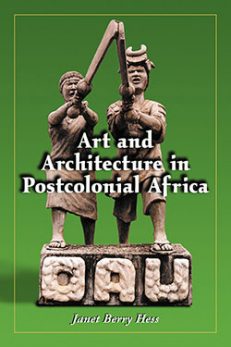Art and Architecture in Postcolonial Africa
$39.95
In stock
About the Book
The struggle of African nations to achieve independence from colonial rule was a momentous event in world history, and among the most influential features of the postcolonial independence era was the art and architecture that it produced. With decolonization, Africa was thrust into nation building and into the related process of negotiating its cultures, integrating modernism while simultaneously sustaining regional traditions, and thereby producing a uniquely transitional art.
This work examines the complexity of popular artistic culture in the era of African nationalism, with a special focus on the influential independence era in Ghana. Chapters One and Two consider the ideologies of the Convention People’s Party and the National Liberation Movement in Ghana and their respective effects on artistic production. Chapters Three through Six discuss the relationship between architecture, museum exhibitions, and political displays and growing nationalist ideologies, revealing the extent to which African art continues to be a medium for political, social, and historical commentary. Chapter Seven investigates artistic practices associated with bodily expression and explores the manner in which these practices were influenced by postcolonial authority, while the final chapters focus on intangible forms of art, such as the communal performance, that characterize both African and diasporic art history.
About the Author(s)
Bibliographic Details
Janet Berry Hess
Format: softcover (7 x 10)
Pages: 220
Bibliographic Info: 92 photos, notes, bibliography, index
Copyright Date: 2006
pISBN: 978-0-7864-2076-6
Imprint: McFarland
Table of Contents
Acknowledgments vii
Introduction 1
1. Exhibiting Ghana: Display, Documentary, and Spectacle in Ghana 17
2. Displaying Asante: Asante Ideology and Alternative Representations of the “Nation” 41
3. Imagining Architecture: The Structure of Nationalism in Accra 70
4. Imagining Architecture II: “Treasure Storehouses” and Constructions of Asante Hegemony 91
5. Envisioning Ujamaa: Architecture in Dodoma and Dar Es Salaam 114
6. Reversing the Gaze: Exhibition, Postapartheid Art and the Politics of Display 127
7. Representations of the Body in Postcolonial Africa 140
8. The Gaze, “Tradition,” and African Art History 155
9. Envoi: Expressive Culture and Performativity in the Diaspora 162
Conclusion 177
Chapter Notes 179
Bibliography 195
Index 203





